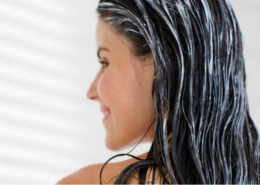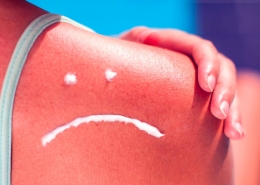Nutrients For Skin and Hair
Here’s a list of diet essentials that you have to ensure gets on your plate every day.
Macronutrients
These are the three food essentials—proteins, carbohydrates, and fats—that our body needs in large quantities to stay healthy. They support the cell structure of our body.
PROTEINS: Proteins are fundamental components of all living cells and include many substances such as enzymes, hormones, and antibodies that are necessary for the proper functioning of an organism. Protein is the key element in our skin and hair make up. They are essential in the diet of animals for the growth and repair of tissues. Your body converts standard proteins that you eat into keratin protein to make up your hair, skin, and nails. Ensuring that you include one source of protein in every meal of your day will help hair growth. That said, the amount of protein required depends on the age and ideal body weight of an individual.
Best food sources: Eggs, lean cuts of chicken, oily fish, lentils, soy or tofu, and spirulina.
CARBOHYDRATES: Despite varying reports about carbohydrates, it is an essential part of your diet. Carbohydrates are a group of organic compounds that include sugar, starch, cellulos, and gum and they serve as a major energy source for us. Carbohydrates sourced from plants give you fibre that regulate your cholesterol and blood sugar. Fibre also helps in eliminating toxins from our body and in better absorption of the nutrients. However, you have to make sure you get your carbohydrates from plant sources and whole grains, and avoid ‘white’ or ‘refined’ carbohydrates.
Best food sources: Whole grains, unpolished dals, oats, brown rice, beans like rajma, carrots, spinach etc.
FATS: Among the macronutrients, fat is essential for supple skin texture and glow. The micronutrients that are essential for skin protection require fat as a medium for absorption. Essential Fatty Acids (EFA) is another nutrient that cannot be made by our body and is required to be consumed through our diet. EFAs are responsible for skin repair, moisture content, and overall flexibility. Dry, inflamed skin or skin that suffers from the frequent appearance of whiteheads or blackheads can benefit from supplementing with EFAs. EFAs are essential to grow hair. About 3% of the hair shaft is made up of these fatty acids. There are two types of EFAs—Omega-3 and Omega-6—that we need to keep our skin and hair healthy.
Omega-6 fatty acids promote hair growth and support skin cell renewal, while Omega-3 fatty acids moisturize your skin and hair follicles for long, radiant hair and a smooth complexion. Omega-3s are also found in cell membranes in the skin of your scalp, and in the natural oils that keep your scalp and hair hydrated. Chances are that you already consume enough Omega-6 fatty acids, so focus on increasing your Omega-3 fatty acid intake. For healthy adults, a combined daily total of 500 milligrams (mg) EPA + DHA is recommended either from diet (i.e. oily fish) or supplements. While having fish for dinner is one way to get EPA and DHA, most people don’t eat the suggested two to three servings of oily fish per week to reap the benefits of these powerful nutrients.
Best food sources: Walnuts, flax seeds, chia seeds, peanut butter, fatty fish like salmon, cod liver oil supplements, and primrose oil supplements.
Leave a Reply
Want to join the discussion?Feel free to contribute!


















This information is very good and helpful to keep up a healthy diet.
Thank you.
cod liver oil supplements tab how many can we take in a day and when?